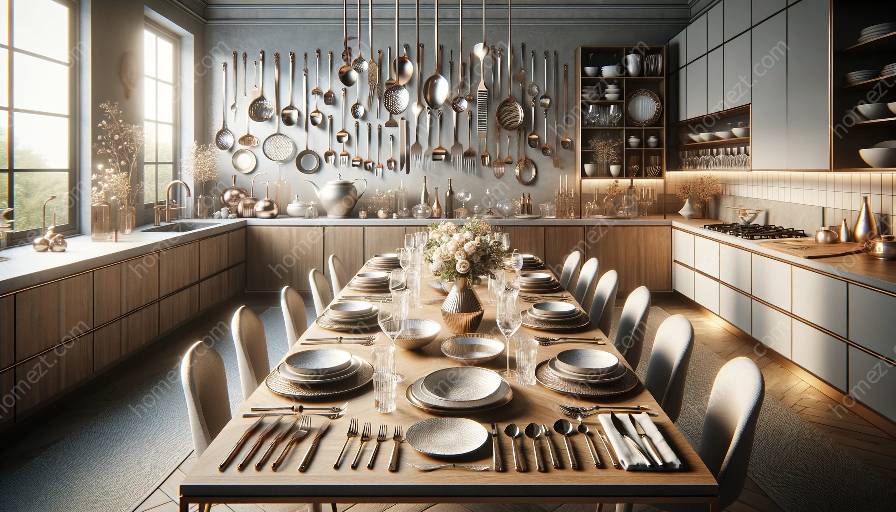Flatware, or cutlery, holds a significant place in the history of human dining and kitchen culture. Its evolution reflects changes in technology, fashion, and social customs. This topic cluster explores the intriguing history of flatware and its impacts on kitchen and dining practices.
The Origins of Flatware
The use of utensils for eating dates back to ancient civilizations such as the Egyptians, Greeks, and Romans. Initially, people relied on simple tools made of wood, bone, or shells to handle and consume their food.
The widespread use of metal flatware began during the Middle Ages, when advancements in metalworking allowed for the production of more sophisticated utensils. Wealthy households often had custom-made flatware crafted from silver or gold.
Evolution of Flatware Design
The design of flatware has evolved over the centuries, reflecting artistic movements, cultural influences, and technological advancements. During the Renaissance, ornate and elaborate flatware became fashionable, showcasing intricate details and engravings.
The Industrial Revolution brought significant changes to the production of flatware, making it more accessible to a larger population. Steel became a popular material, offering durability and affordability.
Flatware in Different Cultures
Across different cultures, flatware has played a central role in dining traditions and social customs. In China, the use of chopsticks became an essential part of the dining experience, reflecting a unique approach to eating utensils.
Similarly, the etiquette and symbolism associated with flatware in European and American cultures have evolved over time, influencing table manners and social interactions during meals.
Modern Flatware Trends
Contemporary flatware designs continue to be influenced by diverse cultural and design trends. Materials such as stainless steel, titanium, and even recyclable materials are used to create versatile and environmentally friendly flatware options.
Today, flatware is not only functional but also serves as a form of artistic expression, with designers creating pieces that blend form and function in captivating ways.
Flatware in Kitchen & Dining
Flatware has become an integral part of the kitchen and dining experience. It not only complements the overall aesthetic of table settings but also contributes to the enjoyment of meals by providing the suitable tools for eating.
Understanding the history and cultural significance of flatware can enhance appreciation for the utensils we use daily and the traditions they represent.

